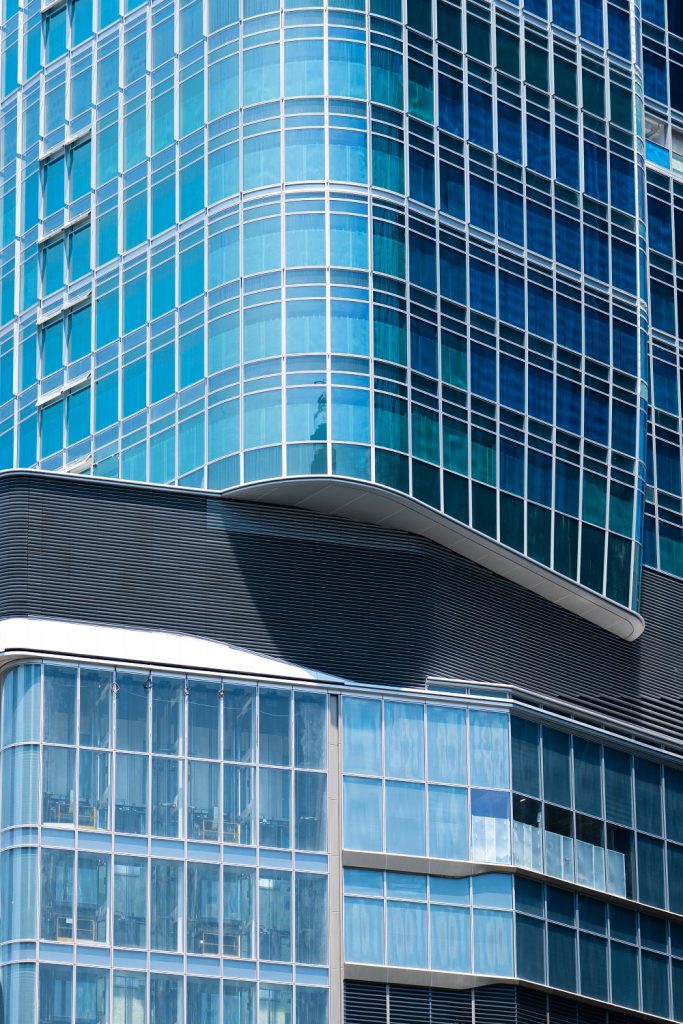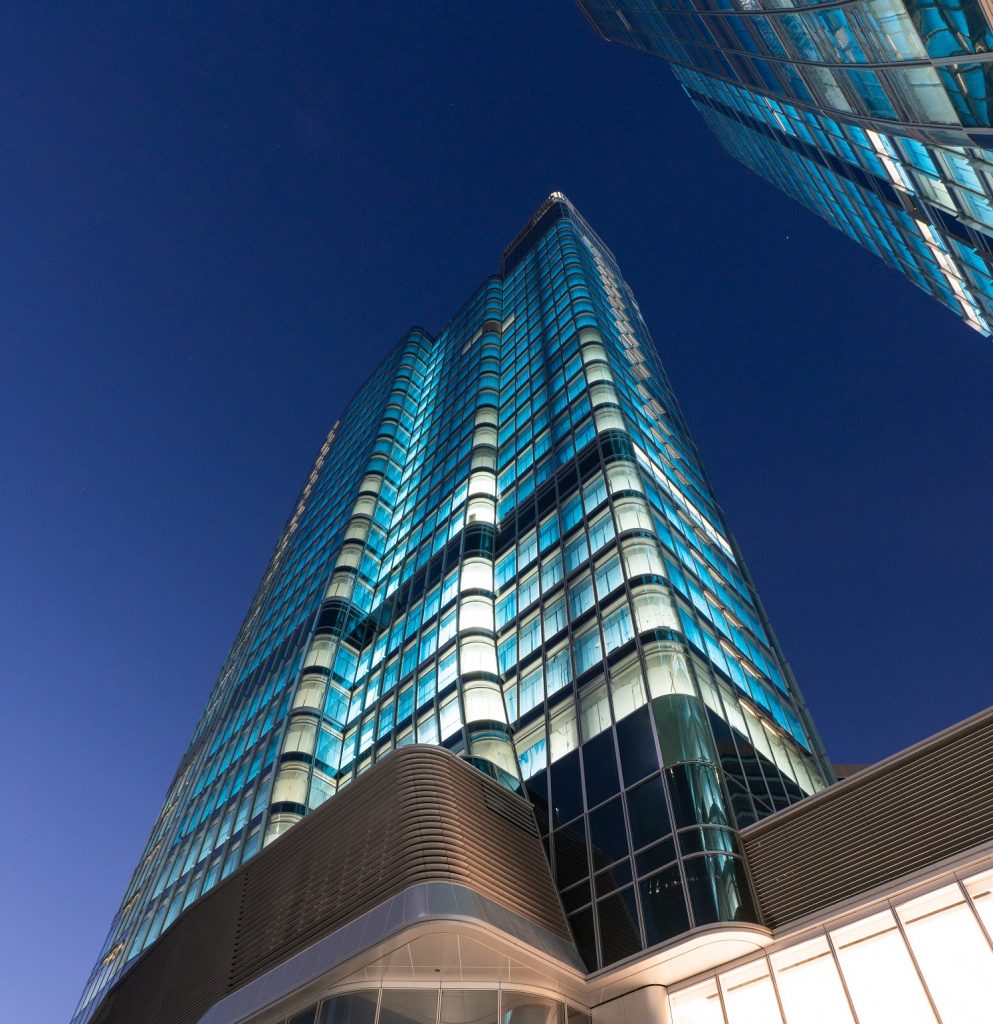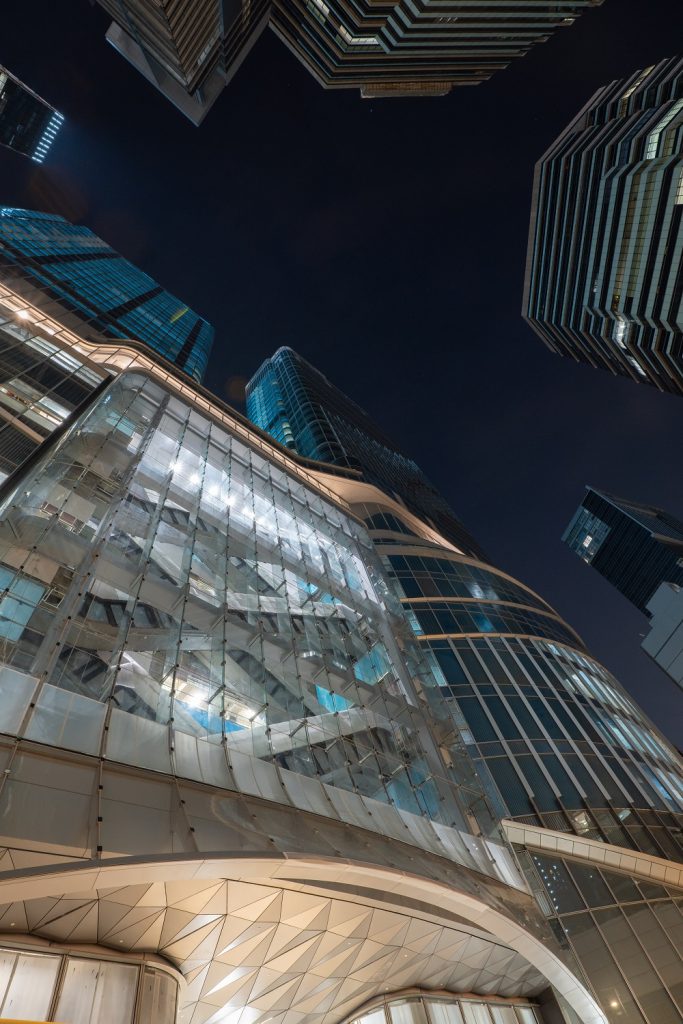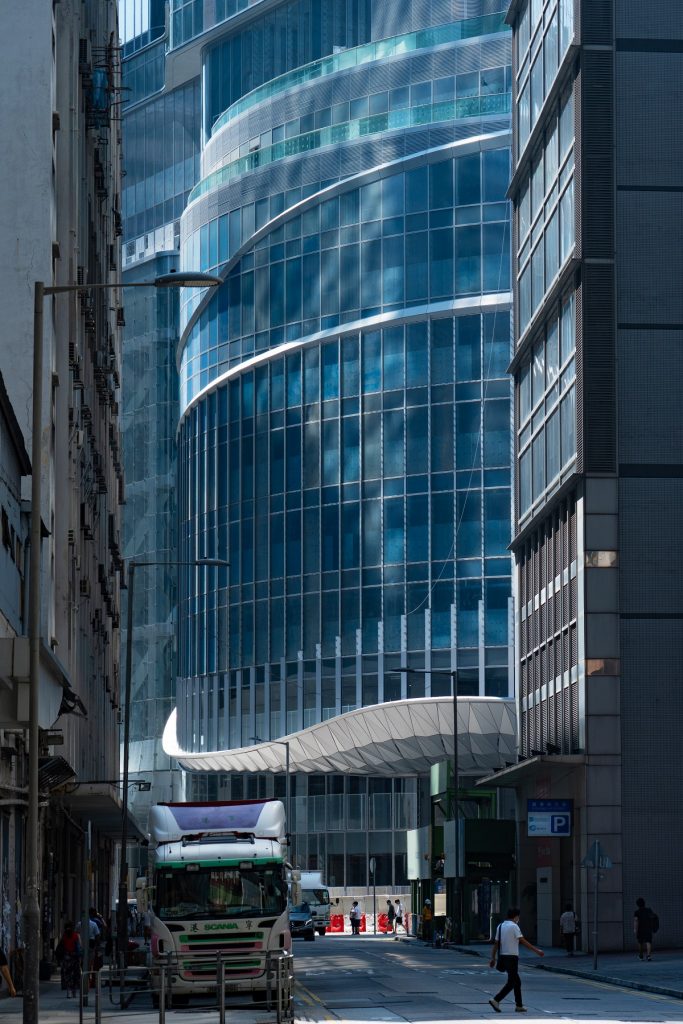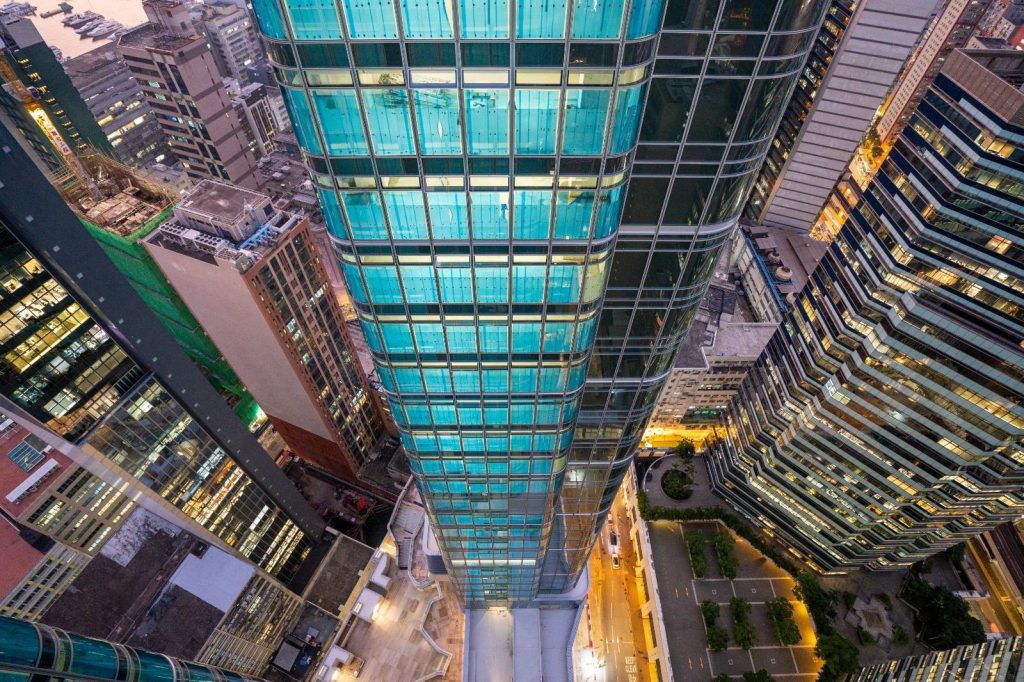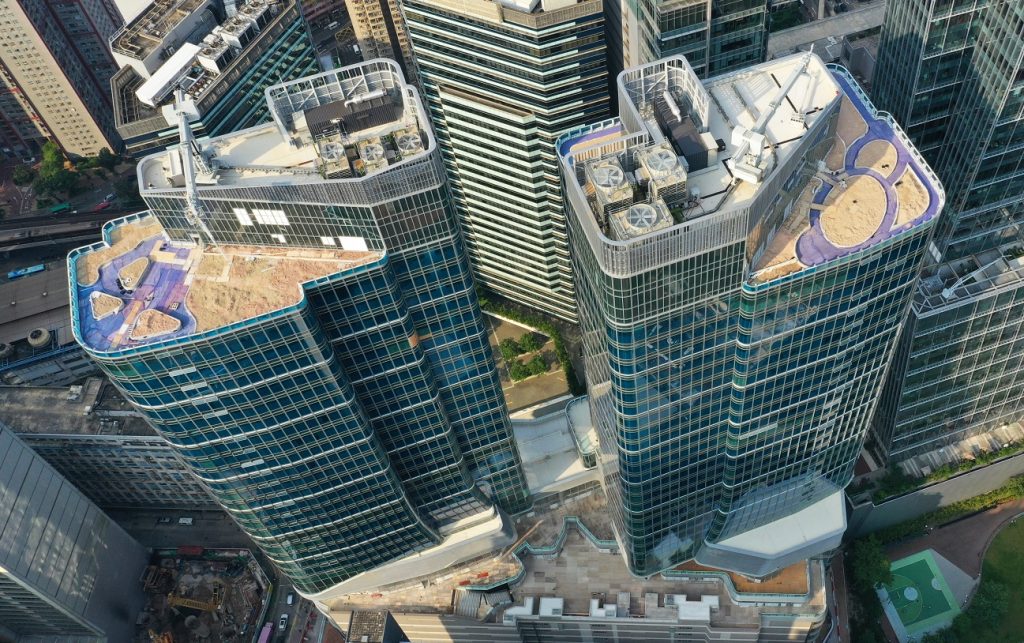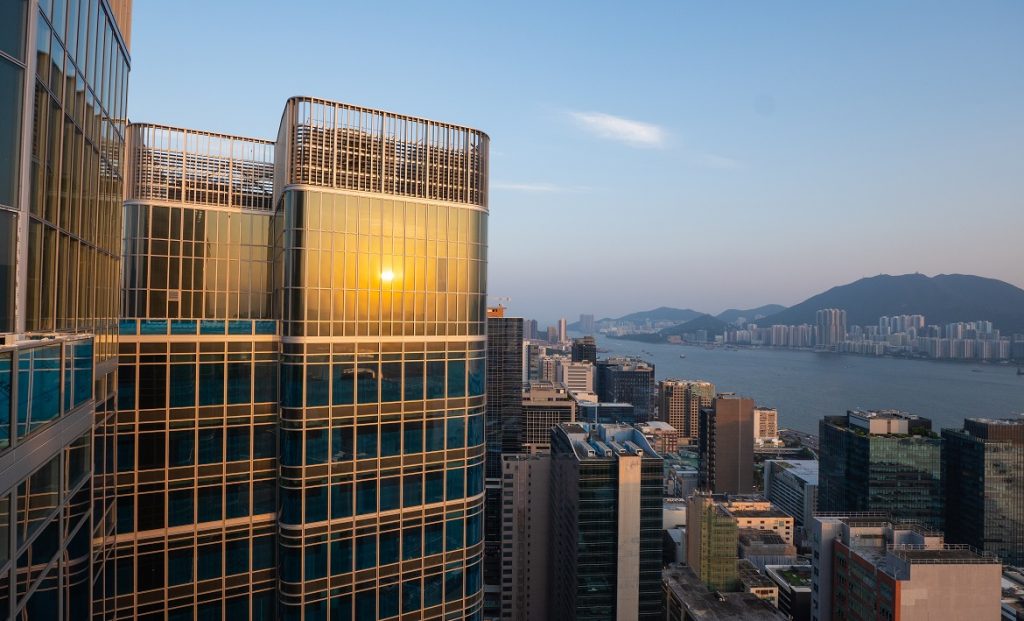
Sun Hung Kai Properties’ (SHKP’s) redevelopment of a site in Kwun Tong that was previously home to the KMB bus depot, 98 How Ming Street marks the start of a new era for the district. Known as KTIL 240, this commercial development could be a catalyst for rejuvenating an area traditionally known as one of Hong Kong’s industrial heartlands.
(按此瀏覽中文版)
Featuring a two-tower office building designed by architects Atelier Global and retail podium by Lead8, the site is situated on a busy arterial street off the main Kwun Tong Road that serves the neighbourhood, from deliveries and drop offs to local vehicular traffic and pedestrians.
For Co-Founder and Executive Director of Lead8, Simon Chua, the aim “was to strike a balance between maintaining functionality and keeping the scale of the street as we delivered the scheme”. By working together with the developer and the myriad consultants involved, the project, he says, “managed, through planning, to keep the connections seamless inside and out, ensuring sufficient daylight into the street from the towers and designing with appropriate materials for the shop fronts”. He added that the team was also “mindful of the neighbouring conditions, such as prioritising pedestrian connections into the arcades and alleys that connect to How Ming Street”.
The total 1.15 million square feet of total GFA is made up of 650,000 square feet of office space in the two 20-storey office towers, set on top of a 500,000 square feet ten-storey ‘glass box’ retail podium and four level basement. At the meeting point of the office towers and retail podium is a sky lobby and footbridge connecting to adjacent developments.
Transparency and fluidity between the facades of the podium and the tower is one of the distinct features, despite them being designed by two different architects and perhaps a real accolade for the team at Sun Hung Kai Properties for its clear brief, planning and management throughout the various phases of the project relating to office and retail design and operations throughout to government and tenant leasing requirements.
Green & smart design
For SHKP, Senior Project Manager, Andy Mok, the project represents an interesting collaboration that maximises the expertise of each of the practices/parties involved. Meanwhile, one of the key features of the brief was it to result in a green and smart design that would meet the requirements for both BEAM Plus, LEED and WELL certifications, and mark one of the first projects in Hong Kong to be eligible to apply for such in both the retail and office portions, in terms of design, construction and forthcoming facility management and building operations.
Mok says this was facilitated by the willingness of Sun Hung Kai Properties to invest in its own in-house building information modelling or BIM team, which today consists of around 40 engineers. “Our commitment to this technology allows us to virtually build a building well before the actual building has been built,” he adds. “It has also helped us attract the younger generation joining the construction industry.”
As his colleague, SHKP’s in-house construction expert and Deputy General Manager of Sanfield, Eddie Ho explains, the use of BIM data has also provided benefits to the use of modular integrated MEP or mechanical, electrical and plumbing engineering, which have proved useful in terms of logistics, supply chain issues and government efforts to enhance the urban landscape of the area.
Government engagement and district enhancement
Throughout the project SHKP has also engaged with the government in enhancement works on the surrounding area. This has included working with the Transport Department and District Council to widen How Ming Street from two to three lanes, and rerouting a section of the street from one way to two ways without reducing the pedestrian pavement.
Indeed, as Andy Mok of SHKP explains, this is an example of a collaboration between a private developer and the government to enhance the environment for the benefit of the general public.
“The urban landscape is much different to what it was five years ago. The building itself is set back ten metres from How Ming Street and we are proposing a footbridge that will connect to the MTR station. This is an ongoing project, and this footbridge will come in addition to the existing four footbridges that currently exist on the left hand side and leave Kwun Tong’s north and south positions substantially divided. This footbridge will provide another opportunity to connect the two districts and to improve traffic across the whole district,” he explains.
Chua also references how the design embraced the journey towards neighbourhood improvement. “With a highly trafficked site, it is important to provide a pleasant human scale along the street frontage and maintain the right architectural proportions of the glass panels along the ground level. The façade was deployed with low iron glass to maximise transparency and natural light into the development. Equally important is maintaining visibility from the street for pedestrians. The design reduces the ‘wall effect’ along the main road and allows visitors to observe the fabric of the neighbourhood in all its fine detail.”
Atelier Global’s Frankie Lui agrees that striking a balance between the external and internal environments and providing permeability for the adjoining area was paramount, certainly given the harbour facing view to the south. “You can see that the [two tower] buildings are staggered, which in terms of site planning allowed us to consider regulations, and from an aesthetic viewpoint create different floor plates with different building power control. The layering of the design allows the building to gradually unfold towards the end of the site and maintain the balance of the floor area, which controls overall heat gain.
The smaller tower, despite its relatively elongated proportions, does not affect the overall thermal transfer of the value of the building, and the folding strategy of the façade design corresponds well potentially for executive or management level use, whilst picking up some of the design language that corresponds with Lead8’s design of the podium,” he adds.
A collaborative effort
Not only does KTIL 240 mark the latest of SHKP’s redevelopment of Kwun Tong. Its clear brief also brings together a rich array of dedicated consultants with specific skillsets and expertise. The facade concept was based around creating a curved and organic geometry that breaks up the hard geometries of the surrounding industrial buildings. For the tall retail podium, Chua says this meant re-proportioning the façade elements to incorporate the curvilinear expressions, as well as keeping the glass panels as rational as possible. Together with the main tower, the rounded towers also express a “friendly gesture that resonates with the form of the podium, avoiding sharp corners in a tight neighbourhood”.
“The façade design represents a major skin component and needs to be as transparent as possible for the retail to work,” he explains, citing the enormous exhaust and ventilation requirements of restaurant outlets.
“We needed to strike a balance to achieve the goals for all using the development whilst accommodating the complex design brief. In collaboration with Alpha Consulting, our façade consultant, a variety of curtain wall systems were adopted to meet the client’s requirements and internal functionality,” he adds.
And while the site represents the hub of one of Hong Kong’s old industrial hubs, the two architects were able to take inspiration from the adjacent park, echoing its greenery from the secret gardens on the 10th floor podium rooftop, and creating a beautiful public realm and sky landscape deck for people to come together to enjoy the harbour.
From transparency through to fluidity through to technical applicability it is clear that KTIL 240 is breathing new life into the area, setting a precedent for the future of Hong Kong design. Led by the enthusiasm and dedication of developers such as SHKP, sustainability, collaboration, and technology look to be setting the standards for a new dawn in Hong Kong’s construction industry.
















